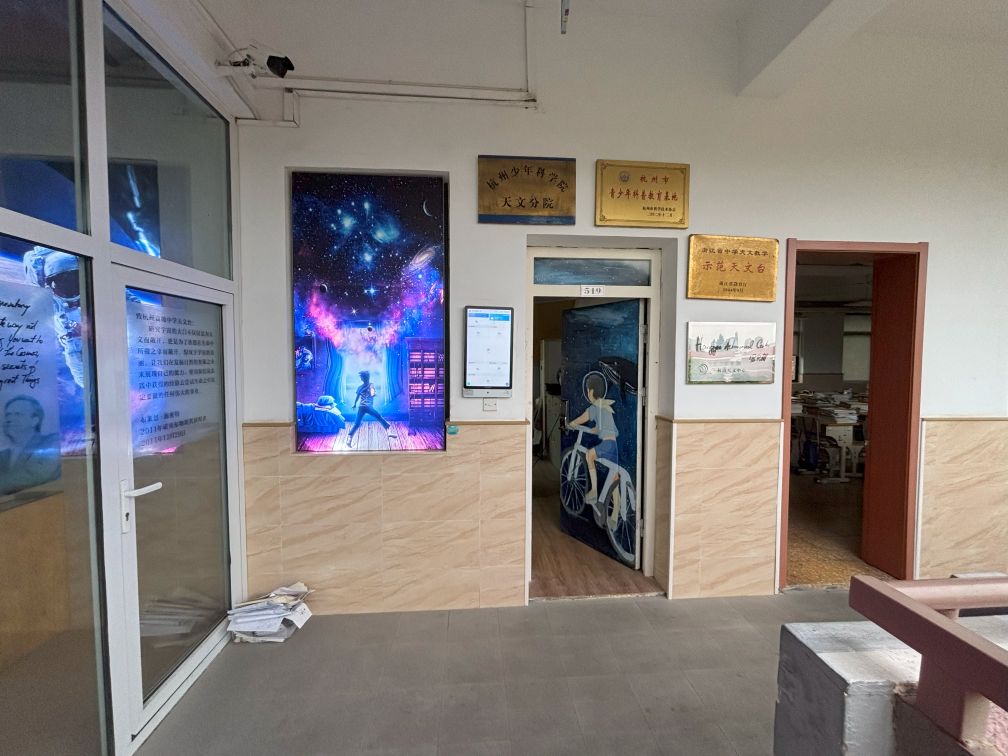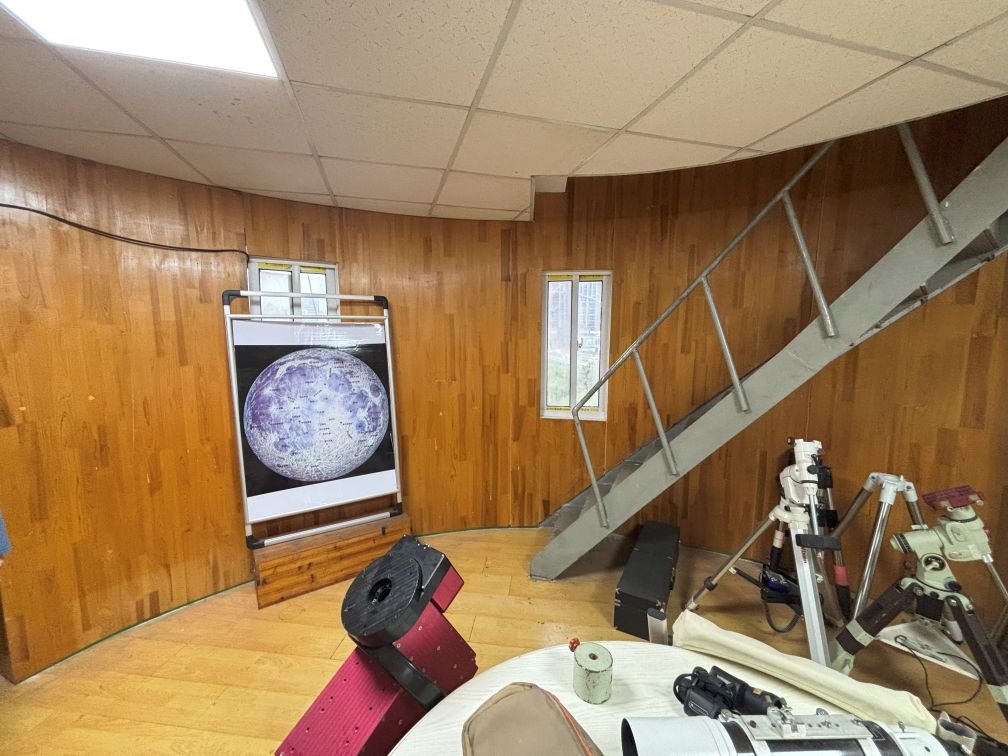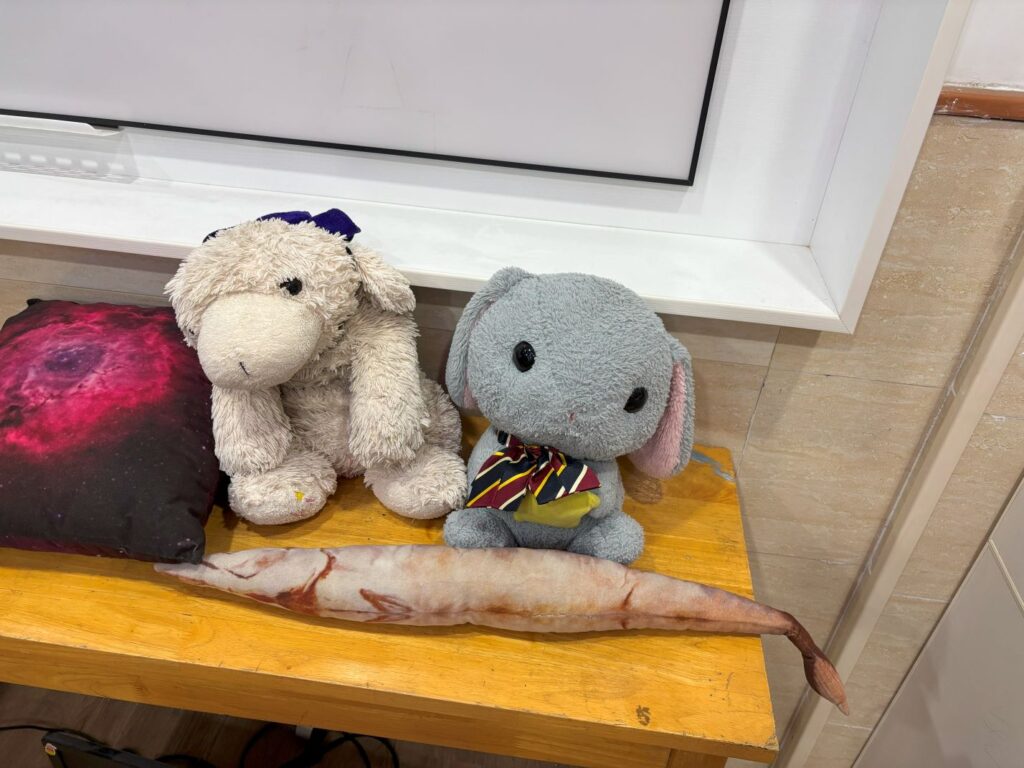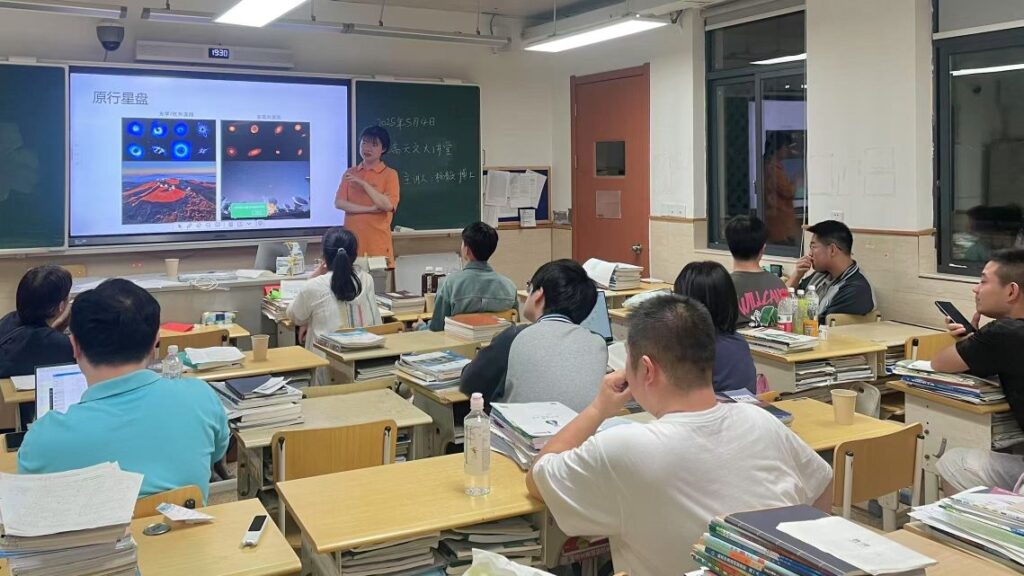Return to Launchpad – A Visit to Hangzhou High School
Captain’s Log, Stardate 60801.4, During the past Golden Week, I returned to my hometown of Hangzhou. After years of navigating the cosmos as a researcher, I finally revisited the place where my own scientific voyage began—Hangzhou High School (杭州高级中学). It has been ten years since my last visit, yet the memories felt as vivid as starlight on a crisp winter night.

I visited the astronomy club, once my command center during stargazing nights, outreach events, Astronomy Olympiads, and solar eclipse observations. It was there that I first learned how to explore, question, and wonder. I was struck by the changes. The door has been redesigned beautifully, now adorned with a painting of a boy cycling through the universe beside a whale—a whimsical reminder that the cosmos is as much about dreams as it is about data. The dome room, once chaotic and cluttered, now looks orderly and modern. And yet, some things endure: the telescope still stands sentinel in the dome, unchanged, as if waiting to witness another generation’s first glimpse of Saturn’s rings or the craters of the Moon.

I met with Ms. Lin, my club advisor from those days—still just as energetic—and also with Ms. Tian, the current advisor guiding today’s aspiring astronomers. Some of my former clubmates were also there. One had become a teacher; another had ventured into indie game development, working on a simulation of geological evolution on terrestrial planets—proof that the love for science can evolve in fascinating directions.
To my delight, I also encountered the club’s beloved mascot, “Dianji Baby (电击宝宝)”—a small white plush dog named after a brilliant past member. Though its fur is worn and its seams tired, Dianji Baby remains a cherished companion. And now, it has a partner: a grey rabbit plush who keeps it company under the stars.

Despite the nostalgic joy, I couldn’t help but feel a pang of change. Today’s students have less time to engage in club activities, swept up in the tide of academic pressures and endless examinations. But I hoped to spark even a small flame of curiosity by giving a short talk—introducing my research on protoplanetary disks, and the exciting new frontier of Hycean Worlds, like K2-18b. I shared images captured by Subaru Telescope, ALMA, and JWST, hoping to bring the edge of discovery a little closer to home.

As I left, I gazed once more at the dome, remembering the nights spent beneath it—eyes on the sky, heart full of questions. And I knew that somewhere within those halls, a student might one day trace the same path, looking up and daring to ask: What’s out there?
Captain out.